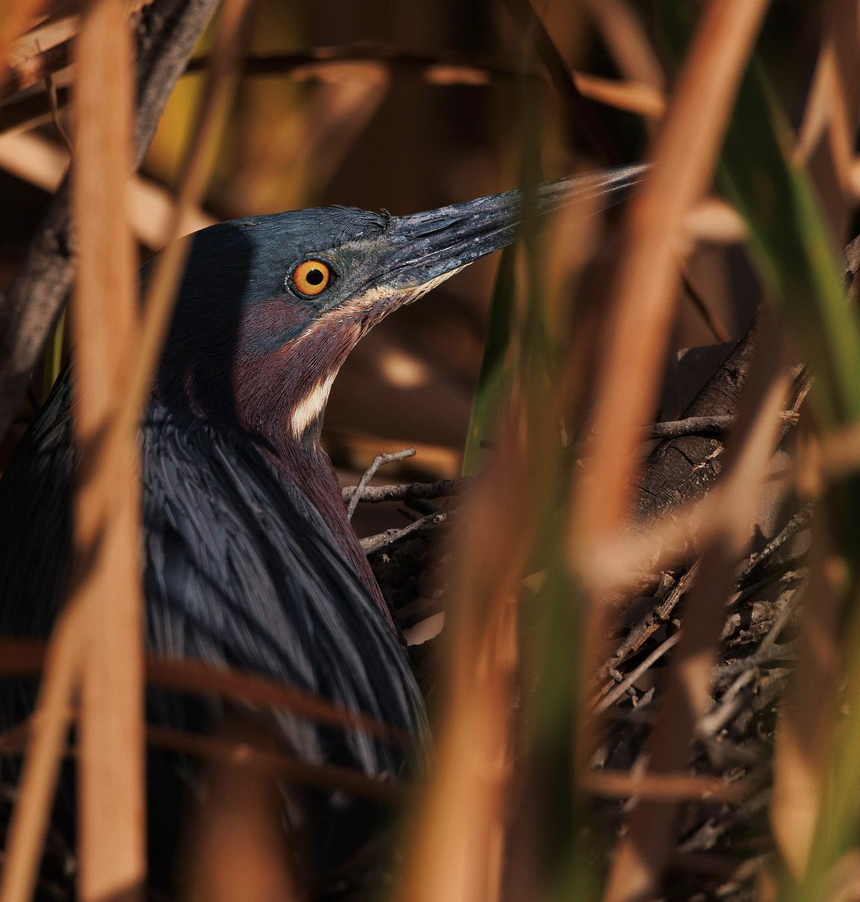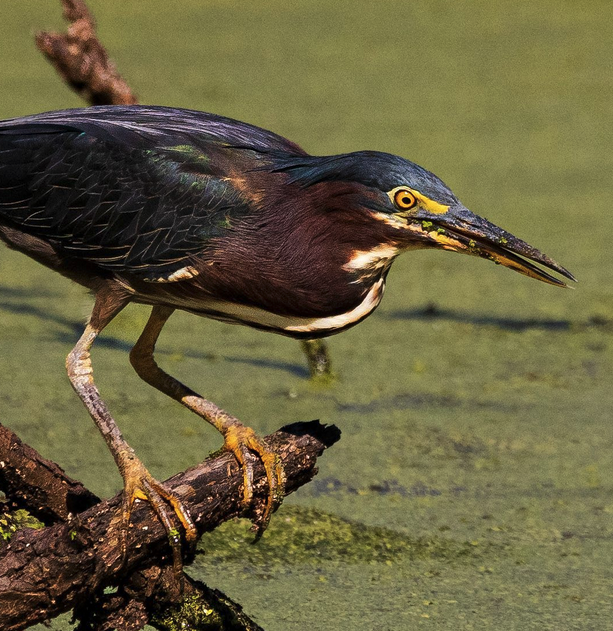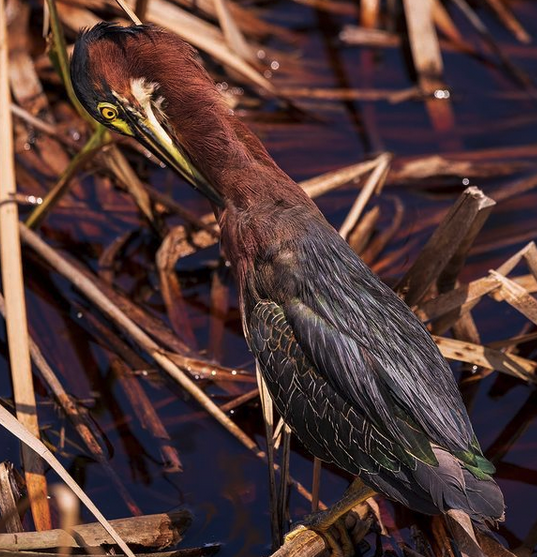-Sally Siko
When exploring near ponds and marshes in the Carolina’s it’s hard not to stumble on a Green Heron or two hanging out on the shore.I spotted this handsome guy while on a birding trip at the PeeDee NWR.
It was a lot of fun to watch this bird hunting for a meal. In fact, there were several of them skulking in the cattails too.Sometimes it takes a few minutes to spot them nestled in the reeds so patience is required lol. My best advice is to look for the reflection of sunlight glinting off of their eyes among the shadows.Since they are so common they’re often overlooked but if the light hits them just right, these little birds are absolutely beautiful!

As it goes with others in the heron family, Green Herons can be found walking in shallow waters stalking fish, insects and small crustaceans.When their prey is spotted, they’ll freeze and then strike like a dart into the water piercing the prey with their bill.
Interestingly, Green Herons also employ another tactic to catch a meal as they’re the only species of heron known to “bait” their prey.
These clever birds will use twigs, feathers, or insects to lure a fish within reach. When the fish comes in closer to investigate the object, the bird will strike.Truly a smart and fascinating creature IMO!The Green Heron is found throughout the Carolinas from March to October so you’ve still got plenty of time to go see them this year.
That being said, quite a few of them have been reported to spend the wintertime in our southeastern coastal counties which is pretty neat!
Photos by @sally_siko of @bestlife_birding captured on my mighty mirrorless monster, the @canonusa #R5











